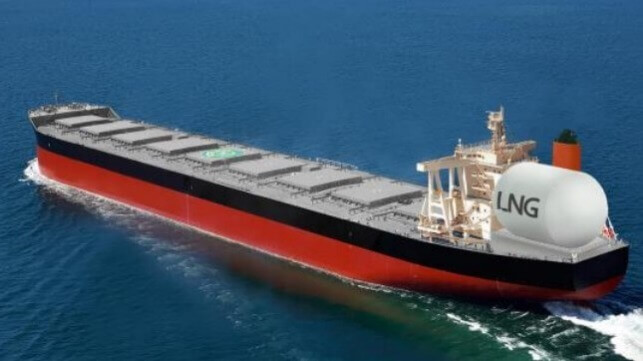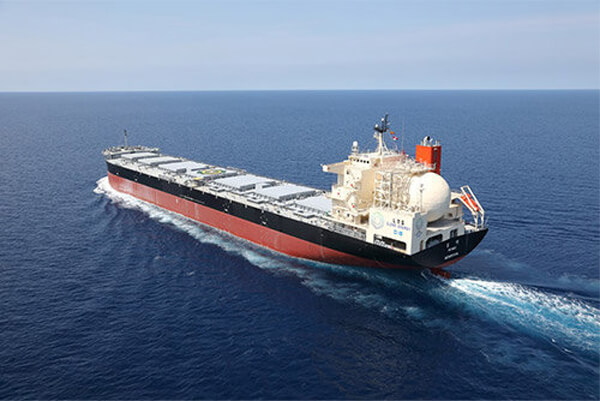MOL Expands LNG Investment Ordering Five Capesize Bulkers

Japan Mitsui O.S.K. Lines is continuing its move to adopt LNG-powered vessels as part of its decarbonization plan. The company announced orders for five of the largest dry bulk carriers in its fleet, Capesize vessels, as it continues its fleet expansion efforts.
The order for the new ships will be split with two ordered from the Nihon Shipyard group in Japan. The vessel will be about 209,000 dwt and 984 feet (300 meters) in length. These vessels will be built by Imabari Shipbuilding as part of the Nihon group.
The design places the LNG take aft of the deck house. The position of the tank is similar to the Reimei a 95,700 dwt Panamax-size coal carrier, delivered last month as one of the first two LNG-fueled bulkers in its fleet of approximately 200 ships. The company has been operating one LNG-fueled vessel since March 2023.
The second newbuild order was placed with CSSC Qingdao Beihai Shipbuilding Co. in China. They will be building three 210,000 dwt bulkers also fueled by LNG. The vessels are slightly larger and the design shows two LNG tanks placed around the deckhouse.
The five new vessels are due for delivery in 2026 and 2027 and bring to 12 the total number of LNG-fueled Capsize bulkers MOL has on order in addition to one already in service. They also have another Panamax-size LNG-fueled bulker on order in addition to the Reimei. The recently delivered vessel is operating carrying coal under a long-term charter to Kyushu Electric Power Co.

MOL's Panamax LNG-fueled coal carrier entered service in November (MOL)
The order for the new ships is part of a broader strategy by the company to adopt LNG as a core element in its future strategy. MOL highlights that it now has a total of 32 ocean-going LNG-fueled vessels ordered with six already in service. This includes in addition to the two bulkers, two ferries, and a coastal cargo vessel as well as a demonstration project with an LNG-fueled tug which is now being converted to ammonia.
MOL is adopting LNG across all segments of its operations. On order for the next phase of the implementation of the LNG strategy are 13 car carriers as well as four VLCC tankers. MOL’s strategy calls for the company to have 90 LNG/methanol-fueled vessels in operation by 2030. The company expects that future fuels such as ammonia are at least a decade away from being commercially operational.
The shipping line has also been testing other strategies including the use of a rigid wind sail and near-term use of biofuels. MOL aims to be operating net zero carbon emissions by 2050.
